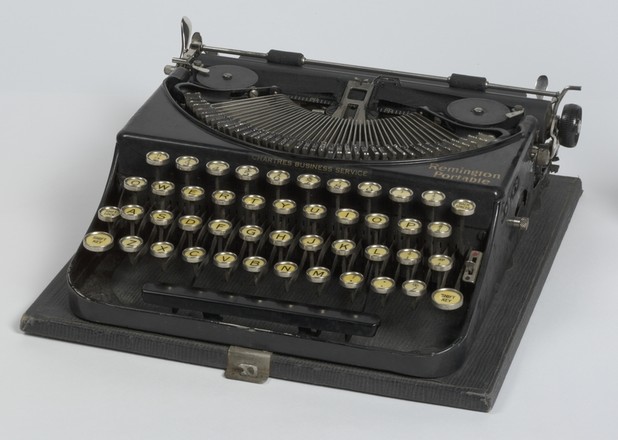The Remington Portable
By http://mytypewriter.com/remingtonportableof1920s.aspx
The
Remington Portable first appeared in the market in 1920. It was not the first-ever
portable – the Blickensderfer and the Standard had already appeared on the
market – but it was the first portable to use a 4-bank standard keyboard as
well as other principal features of the office machines. The Remington Portable
has a unique method of raising the typebars to a printing position by means of
a lever on the right side of the typewriter. The production of the Remington
Portable lasted more than 8 years, with continual improvements to the design.
Early Remington Portable typewriters have a single shift key on the left side,
whereas the later versions have shift keys on both sides of the keyboard.
Because of this variation, many collectors refer to the early machines with the
left shift key only as the Remington Portable No. 1, and the rest as the No. 2.
Later versions also appeared in several duotone colours.
Remington Portable No. 3
By http://mytypewriter.com/remingtonportableof1920s.aspx
The
lightest and strongest of its kind! Continuing its compact-portable success,
Remington introduced the new improved model No. 3 in 1928, which eliminated the
raising-typebar design. Though super-light for its time, this new model had all
the features and latest mechanical refinements previously found only on the
office machines. With a sleek little profile, weighing just 11 pounds 8 ounces
in its carrying case and standing a little more than 4 inches high, the No.3
was aggressively marketed as the ideal personal writing machine for anyone who ‘wrote’.
Chartres Business Service
By http://oztypewriter.blogspot.com.au/2012/02/australias-biggest-typewriter-seller.html
The
names Chartres and Remington are so closely associated with typewriters in Australia that people
here selling old Remington
typewriters often refer to them as Chartres Remingtons. They are Remingtons, but
the Chartres Business
Services decal on the front on them might give the impression Chartres had
something to do with making them. Chartres merely imported and sold them around the
country.



 Back to list
Back to list